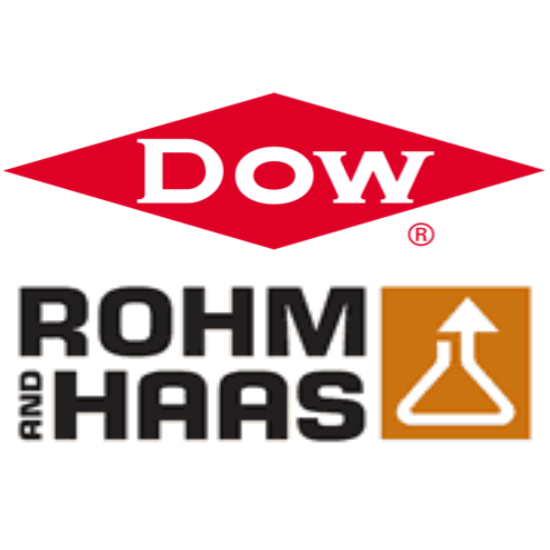The article analyzes the acquisition of Rohm & Haas by DOW and the response of BASF to it. The article further looks into a possible third company which might respond with a similar strategy.
I. Overview of Chemical Industry scenario
Chemical Industry is a $3.2 trillion global enterprise. It is under heavy earnings pressure for a number of reasons. Some of those reasons are increasing raw material costs, feedstock price volatility, transportation costs, effect of economic downturn on a number of end markets, unused excess inventory, increasing fixed costs and under-utilization of plant capacities. Companies are reviewing their businesses to cut costs, reduce earnings volatility and increase product offerings & revenues.
II. Acquisition of Rohm & Haas by DOW Chemical Company
Background about the acquisition deal
DOW Chemical Company headquartered in Midland, Michigan reported sales of $57b in 2008. It delivers a broad range of products which are used by a number of other industries for providing water solutions, food, pharmaceuticals, paints, pigments and packaging products. It had a product portfolio which consisted largely of commodity chemicals. As part of its growth strategy, it wanted to modify its product portfolio with a bigger percentage of specialty chemicals. It therefore acquired Rohm & Haas (RH), a specialty chemicals business headquartered in Philadelphia, PA. RH reported revenue of $9b in 2008. The merged companies were to become the leading specialty chemicals and Advanced Materials company in the world.
DOW agreed to buy RH through cash purchase at $78/share. This was at a 74% premium. The total estimate of the deal was placed at $15b. It faced unexpected financial problems to pay for the deal when Kuwait-based Petroleum Investment Authority backed out from the joint venture agreement. It was planning on using the $7b cash flow that should have been generated from the joint venture. The deal has placed DOW under heavy financial pressure and it is questionable if it had to pay a 74% premium under the weak economic condition. However, this article does not delve into financial analysis of the deal. Instead, it focuses on discussing the strategy adopted for its business expansion.
Analysis of the acquisition strategy
The strategy is analyzed from the following points of view: (1) need for the acquisition by the two companies, (2) presence of complementary and overlapping products, (3) presence of synergies and growth opportunities, (4) access to new technologies and potential development of new products, and (5) access to geographic markets.
Need for the acquisition by the two companies: DOW wanted to become an earnings-growth company and was looking for a business to expand its portfolio to specialty chemicals. It was facing price cyclicality and wanted to move into products with higher profit and growth margin. On the other hand, RH was facing challenges with increasing raw material costs and economic downturn. It was becoming difficult for specialty chemicals business to operate efficiently with good economies of scale and realize profits. RH was looking for a big partner in the industry who could absorb its costs.
Presence of complementary and overlapping products: Dow has a broad range of products in basic chemicals, plastics, agricultural chemicals, seeds, traits, industrial coatings, building solutions, Oil & Gas and Automotive systems. RH’s products in Electronic materials, Architectural coatings, Powder coatings and adhesives are complementary to those of DOW’s products. RH expertise in these high growth products will benefit the new DOW. There are overlaps in products in Construction chemicals, biocides, paper and functional products, water solutions, household & personal care products, and packaging systems.
Presence of Synergies and Growth opportunities: The acquisition is estimated to produce cost synergies of at least $800M per year and raise additional revenue of $3b a year. Cost synergies exists in purchasing raw materials, manufacturing and supply chain, corporate governance and services, utilization of plant capacities, marketing and sales channels. The company as of July 30, 2009 is on track on realizing these cost synergies. Revenue opportunities exist from broader product portfolio and additional sales of RH’s higher profit-margin products in electronics materials, adhesives and coatings. A return of 20% on investment ($3b additional revenue on $15b acquisition investment) is a good investment. DOW has to be aggressive in realizing the additional $3b sales.
Access to new technologies and potential development of new products: The merged companies have invested $1.6b in opening up a R&D facility in China. Dow can gain access to RH’s technology expertise in Advanced Materials and Electronic products. RH can make use of Dow’s process efficiency, high-throughput capacity, leadership in polymer science and heavy investment done so far in Research and Development. There exist technologies which the two can combine to develop more differentiated products. Dow has developed state of the art technologies through its research and development programs in Coatings, Electronics and Adhesives. But it has not much products in these categories upon which it can implement these technologies. On the other hand, RH has leadership position in these areas and application of Dow’s technology on the existing RH products will help to enhance/broaden and develop more differentiated products for customers.
Access to geographic markets: Dow has higher sales presence in emerging Latin America region (Dow 11% of its sales, RH 5% of sales) and RH has higher sales in emerging Asia-Pacific market (RH with 24% of its sales and Dow with 12% of its sales). The two companies can leverage on their complementary strengths in these emerging markets. Dow has deeper inroads of marketing and sales channels which it can utilize to its full capacity.
Thoughts about the deal
Based on the above analysis and combining them with the current industry scenario it was a good strategy by DOW to expand its business by acquiring RH. First, it goes along with its growth strategy to move into specialty chemicals. Taking time to develop new products from the scratch will delay product offerings and sales revenues. If Competitors are quicker in getting new products to markets, then they lose their market share. Second, the two companies have complementary products, cooperative & complementary technologies and complementary geographic presence in emerging markets. The main attraction for DOW is on RH’s products in electronic materials, coatings and adhesives which it should use to its full advantage.
However, DOW should have anticipated the problems with the joint venture agreement with Petroleum Investment Authority. It should have also negotiated for less on cash purchase for acquisition. The heavy financial crunch from Joint Venture failure is delaying the realization of profits from the acquisition. It should handle the acquisition well to be able to manage the finances. Managing their finances is its number one priority.
III. Acquisition of Ciba by BASF
BASF Chemicals headquartered in Germany reported annual sales of €62 billion in 2008. It has a large proportion of commodity chemicals in its portfolio. Ciba is a specialty chemicals company headquartered in Basel, Switzerland. It reported sales of SFr 6.5b ($5.8 billion) in 2008. Ciba was struggling with financial problems and was looking into divesting some of its businesses. It was open for acquisition by another player in this industry.
When DOW announced its acquisition of RH and that it were to become the leading specialty chemicals and advanced materials company, BASF responded by announcing that it is acquiring Ciba for SFr 50/share at a 34% premium. The deal was estimated to be at SFr 6.1b ($5.4b) in cash and debt. BASF is concentrating on Ciba’s expertise in coating, adhesives and electronics just as DOW is placing on RH’s expertise in such products. Moreover, BASF is aggressive on expanding to Chinese market and Ciba has well-established plants in that region. Unlike DOW though BASF does not have financial problems related to the deal. The combined entity of BASF and Ciba were to make it the largest global supplier in plastic additives and second largest in coating materials. It’s estimating that it will have additional revenue of €2b from paints, pigments, inks and plastic additives.
IV. Possible third company with similar acquisition
The current economic downturn is causing financial hardships. Big companies such as Lyondell-Basell and INEOS are themselves struggling paying for their previous acquisitions. Bayer is doing better in its healthcare and pharmaceutical divisions but it is not apparent if it would want to get into an acquisition in response to DOW or BASF. Saudi Petrochemical has already announced its acquisition of NOVA Chemicals. Huntsman Corporation may decide to acquire Swiss-based Clariant Chemicals. Earlier in 2007 it was planning to acquire either Ciba or Clariant. It may respond to BASF move by acquiring Clariant Chemicals and strengthen further its specialty chemicals portfolio.
A few days back Clariant posted quarterly losses and announced job cuts. It is maintaining positive cash flow just by cutting costs and may have problems in the future like Ciba to function alone. With its impressive portfolio of specialty products, it is a good target for acquisition.
This article is moved from: blogspot









Leave a Reply